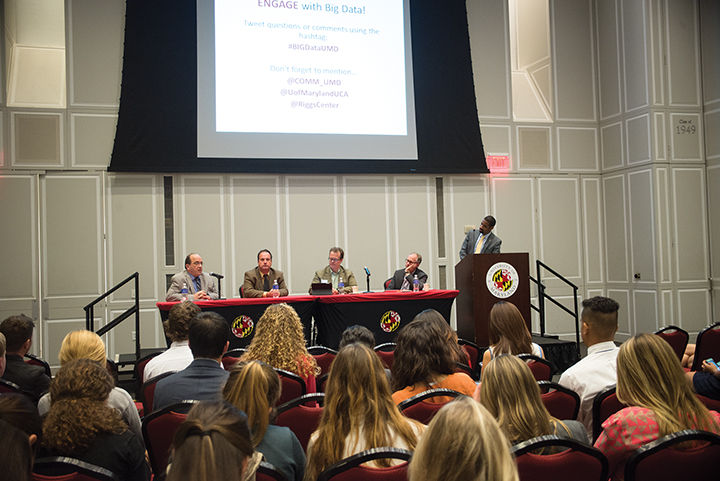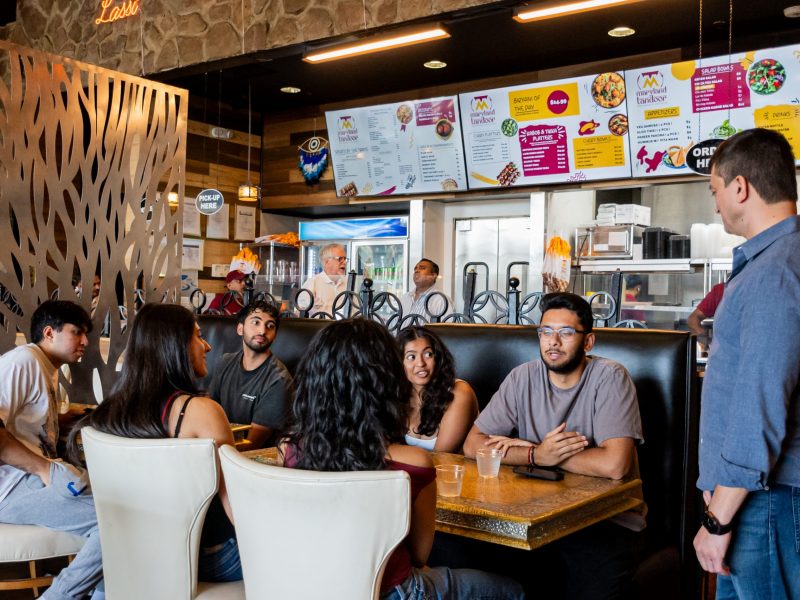
“Talk on Big Data” at the Samuel Riggs IV Alumni Center
About 60 students and alumni gathered in the Samuel Riggs IV Alumni Center on Wednesday evening to hear four panelists speak, enjoy refreshments and network.
These are facts, but that doesn’t mean they have any one fixed meaning. It could be that students came to the event as a class requirement. Or they wanted to support friends who organized it. Or perhaps they were simply interested in big data.
The fact that data are essential, but data alone are not always sufficient, was a repeated point at the “What’s the Big Deal with Big Data: The Future of Communication” event.
“The real value of any of this work is the story you can tell about it,” said Michael Koppenheffer, one of the panelists and Advisory Board Company executive director.
Koppenheffer said he worked with analysts studying hospital data who found there was a decrease in the time many patients spent in hospitals. It was interesting information, but it had no story, he said.
By looking further into the data, they were able to find a 25 percent decrease in time spent in hospitals after joint replacement surgery, which he said suggested such surgeries were becoming more efficient.
Big data is everywhere, but panelists and students at the event, hosted by the communication department and aimed at communication students, agreed data doesn’t end with analysts: Communicators have a critical job of interpreting data and presenting it to the public.
“In our classes, they don’t focus on this,” Josh Nesselrodt, a junior communication major and Undergraduate Communication Association member, said of data interpretation and analysis for communicators. “But if we work in fields with science or technology, we have to know this. Scientists aren’t always great with being understood by the public, and we have to make sure the meaning is accessible.”
Scott Hample, another panelist and the director of this university’s Alumni Relations department, said data can tell the who, what, when, where and how, but it can’t tell the why. People have to find the meaning of data on their own. He said he does this in his own work by using data to find donors to pursue for this university.
“Data-driven decision-making is kind of where the future is,” said Bill Rand, a panelist and business and computer science professor at this university.
Communicators then have a critical duty to make sure data is accurate while also protecting privacy, added Rand, director of the business school’s Center for Complexity in Business.
Rand said every undergraduate major should have data literacy, and Koppenheffer said he strongly believes communication students need to know these skills. Students in the audience agreed.
“Big data is now the newest thing,” senior communication major Tyler Troise said. “I think everyone needs to be able to understand at least the bare bones of it.”
Visualization and storytelling can help people understand data. Frank Pietrucha, another panelist, said the work of the NASA data visualization lab helps people understand climate change.
“Data that doesn’t have meaning is just data,” Pietrucha, an author and consultant, said of the importance of expanding beyond the data and finding meaning in it. “Let’s use the data to create better meaning.”



